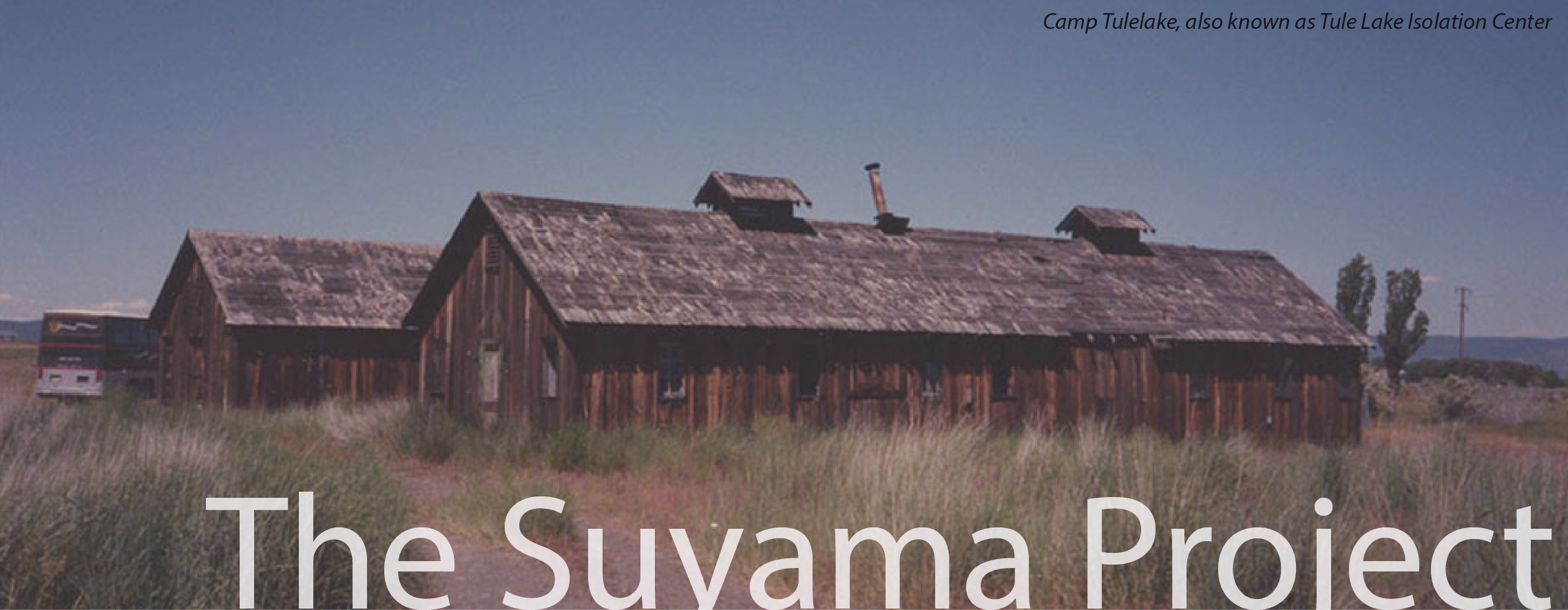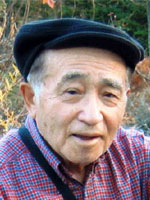
|
UCLA Asian American Studies Center's Suyama Project aims to preserve the history of Japanese American resistance during World War II, including, but not limited to the 100th/442nd Regimental Combat Team draftees, Army and draft resisters, No-Nos, renunciants, and other Nikkei dissidents of World War II. The Suyama Project is made possible through the generous gift of an anonymous donor who wanted to honor and remember the legacy of resistance, broadly understood. |
Who was Eji Suyama?

Eji Suyama (1920 - 2009) joined the U.S. Army before the start of World War II and became part of the replacement unit of the 100th/442nd RCT. He distinguished himself in combat in France and Italy and was one of very few surviving riflemen from the 3rd Battalion (100/442 RCT) in the legendary rescue of the Texas “Lost Battalion,” where the 442nd suffered an estimated 800 casualties to rescue 211 men of the 141st Regiment caught behind enemy lines. [more...] Community Forum Events TULE LAKE: AMERICA'S WORST CONCENTRATION CAMP Featuring Roger Daniels and Barbara Takei Saturday, September 14, 2019 | 1:00 - 3:30pm Buddhist Church of Sacramento 2401 Riverside Blvd, Sacramentom CA 95818 Project Spotlights
JIMMIE OMURA'S 'RETURN TO THE WARS' DIARY An edited and annotated version of James Omura's diary is now available. Omura was a vocal opponent of the mass eviction and incarceration of Japanese Americans on the West Coast during World War II. He wrote editorials pointing out the unconstitutionality of the United States style concentration camps and chastised Japanese American leaders, who advocated a policy of government cooperation. He supported the draft resistance movement when the government began drafting men from out of the camps. The diary was written during World War II, when Inouye was thrown into the stockade at the Tule Lake Segregation Center. At the outbreak of World War II, Tule Lake started out as one of ten War Relocation Authority camps where Americans of Japanese descent, living on the West Coast, had been imprisoned. In 1943, the government converted Tule Lake into a segregation center for people whom the government deemed as "disloyal." After Tuleans protested the overcrowded and unsanitary living conditions at Tule Lake, the government built a stockade--a prison within the prison camp--to incarcerate any one who questioned the government's policy. The Inouye diary gives a rare glimpse into the daily struggles of the stockade inmates, including the arguments that erupted over the decision to go on a hunger strike and the pain endured during the protest. Originally written in Japanese, the diary was translated by Prof. Masumi Izumi of Doshisha University in Kyoto, Japan. Learning Center
TIMELINE OF RESISTANCE 1942-1946 The Timeline of Resistance 1942-1946 was compiled by Yuri Miyagawa, with assistance from Chizu Omori. Miyagawa felt that although research done by historians has revealed that there had been continuous protest by Japanese Americans during World War II regarding their unconstitutional imprisonment into United States concentration camps, much of this information had remained fragmented and dispersed in small pieces across dozens of books, articles, oral histories and academic studies. The Timeline is Miyagawa's attempt to gather some of those scattered pieces together, so that the common misperception that Japanese Americans endured the WWII incarceration passively and silently can be corrected. The Statements of Resistance are actual examples of the petitions and demands as written by Japanese Americans in their own words while imprisoned in the concentration camps. TULE LAKE CITIZEN ISOLATION CENTER During World War II, the United States government had established three, not two citizen isolation centers as previously thought, according to groundbreaking research done by Roger Daniels, emeritus history professor and pioneer scholar in Japanese American history and Barbara Takei, an independent writer/researcher and Tule Lake Committee chief financial officer. The two already-known isolation centers are the Moab, Utah and Leupp, Ariz., citizen isolation centers, which were created to imprison U.S. citizens of Japanese descent whom the government deemed as "troublemakers." Those who ended up at Moab or Leupp were arrested without charge, received no hearings and were imprisoned indefinitely. |